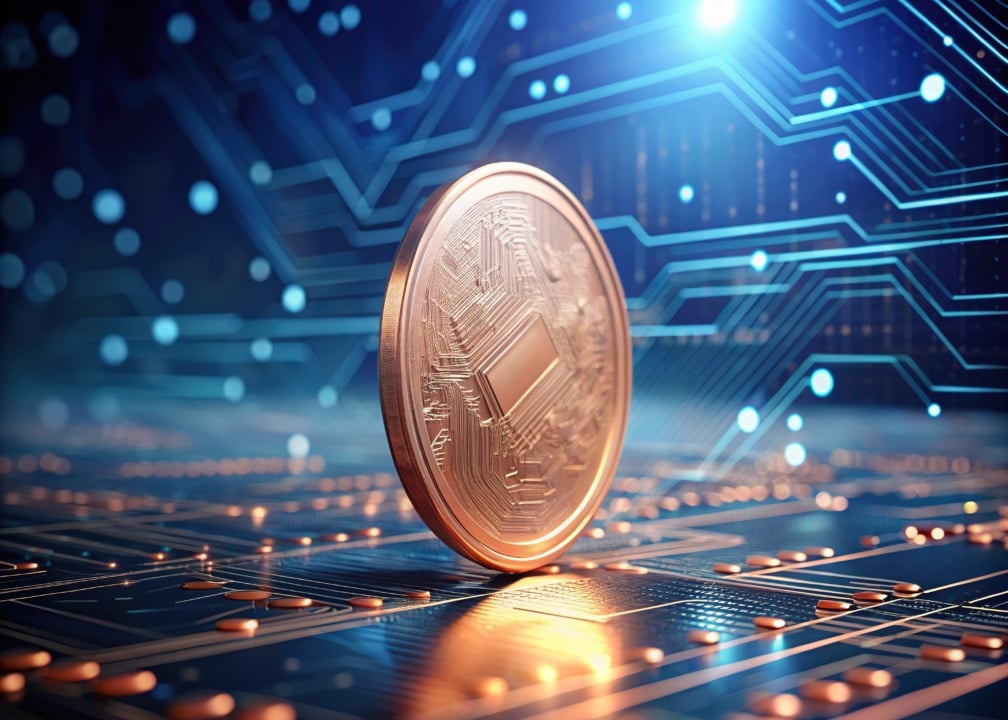Choosing the Best Mining Hardware for Crypto Miners
If you’ve found yourself tumbling down the rabbit hole of cryptocurrency mining, then you already know it’s not just about downloading some software and crossing your fingers for digital gold. The key to success in this competitive arena often boils down to a single question—what’s the best mining hardware for miners like you?
With so many options out there, deciding what to invest in can feel overwhelming. Should you go for ASICs? GPUs? Or maybe even CPUs? Will this shiny new piece of tech pay for itself, or will it drain your wallet faster than it fills your digital one? This guide will walk you through how to pick the perfect mining hardware that aligns with your goals, budget, and operational efficiency. Let’s dig in (pun intended).
What Is Mining Hardware and Why Does It Matter?
Mining hardware is essentially the backbone of cryptocurrency mining. It’s the tech responsible for solving the complex puzzles that secure blockchain networks and verify transactions. Picking the right hardware isn’t just important—it’s everything. The efficiency, profitability, and lifespan of your mining operation all hinge on investing in the best piece of equipment for the job.
The wrong choice can mean higher electricity bills, slower mining speeds, and zero profitability. The right choice? That could mean steady revenue for years. Knowing what works for your needs will help you future-proof your operation.
Factors to Consider When Choosing Mining Hardware
1. Hash Rate
Think of hash rate like horsepower in a car. It’s the measure of how powerful a mining rig is—essentially its ability to solve the complex mathematical problems required to mine cryptocurrency. A higher hash rate means you’re more likely to mine blocks and earn rewards.
For example, ASIC rigs like the Bitmain Antminer S21 Pro offer hash rates of up to 234 TH/s and are perfect for serious Bitcoin miners. On the other hand, some graphics cards (GPUs) provide a more modest hash rate (measured in MH/s) but are widely versatile.
Keep in mind:
- High hash rate = better profitability.
- However, high hash rate hardware often demands more power.
2. Energy Efficiency
Energy consumption is where mining can get expensive—really expensive. The hardware you choose should strike a balance between performance and power efficiency. ASICs, though known for their efficiency, often require dedicated cooling setups, while GPUs are less power-hungry and more flexible in their configurations.
Check the energy efficiency by looking at the watts-to-hash ratio. Lower watts per hash mean your hardware uses less power to perform the same work, which reduces the cost of electricity—a big deal if you’re in it for the long haul.
Pro tip: Do the math on your electricity costs before purchasing anything. If you’re paying for electricity at sky-high retail rates, profitability can shrink fast.
3. Initial Cost vs. ROI
Here comes the million-dollar question—or at least, the several-thousand-dollar question. How much should you spend? The initial cost of mining hardware for miners can range from a few hundred dollars for entry-level GPUs to thousands for ASIC rigs.
If you’re looking ahead and want to stay ahead of the curve, it’s worth keeping an eye on upcoming hardware for miners such as the Iceriver KS7. Expected to hit the market soon, this powerful ASIC device is designed for mining Kaspa (KAS) – one of the most promising proof-of-work coins in 2025. With a projected hashrate of 30 TH/s and excellent energy efficiency, the KS7 is generating a lot of buzz among miners preparing for the next wave of Kaspa profitability.
To maximize profitability:
- Calculate how long it’ll take for your investment to pay off. This is your ROI (return on investment).
- Some lower-cost GPUs may offer a favorable ROI within months, while high-end ASIC rigs can take up to a year or more.
- Don’t forget ongoing costs like electricity, maintenance, and cooling setups.
Golden Rule: If the ROI doesn’t feel right or requires an overly long timeline under your current circumstances, take it as a red flag.
4. Cryptocurrency Compatibility
Different mining hardware excels at mining different cryptocurrencies. For example:
- ASICs perform exceptionally well for specific coins like Bitcoin and Litecoin. They are efficient, powerful, and, with services like Cryptohall24, easy for anyone to get started with—not just industrial-scale miners.
- GPUs, in contrast, are like the Swiss Army knives of mining hardware. They’re versatile, letting you switch between Ethereum Classic, Ravencoin, and more based on market conditions. However, profitability is often limited, especially for beginners mining with only a single GPU.
- CPUs, though lower-tier in terms of power, can be used for certain altcoins like Monero.
If you’re unsure about which coin you want to mine—or anticipate switching currencies frequently—go for GPUs. But be aware that their flexibility doesn’t always translate to profitability.
5. Hardware Longevity and Maintenance
Not all hardware is built to last. ASICs, while powerful, tend to have a shorter lifespan compared to GPUs due to their high-intensity operation. That said, with platforms like Cryptohall24 providing top-notch setup and maintenance support, managing ASIC miners has become far less intimidating for individual miners.
Ask yourself:
- Are you okay with replacing hardware every couple of years if need be?
- Do you have the patience and skill to maintain your rig?
Keep in mind that GPUs, while often slower in terms of hash rate, are easier to clean, maintain, and repair—even for less tech-savvy users.
6. Scalability
Are you planning to keep things small and simple with a single mining rig, or do you dream of building a larger operation? If you foresee scaling up, think about compatibility and ease of setup for your hardware. ASICs may require specialized setups or farm-level management, but services like Cryptohall24 offer solutions that streamline the process even for individual users. GPUs can be configured in small quantities and scaled gradually.
Top Recommendations for Mining Hardware
Here’s a quick overview of some of the most relevant and profitable hardware for miners in 2024 and beyond:
- For Kaspa Mining: Iceriver KS7 – A powerful upcoming ASIC miner designed for the KHeavyHash algorithm.
- For Bitcoin Mining: Bitmain Antminer S21 Pro (234 TH/s) or WhatsMiner M60 Series – Top-tier SHA-256 ASICs with high efficiency
- For Industrial Operations: Hydro-cooled models like the Antminer S21+ Hydro or WhatsMiner M63
- For Altcoin Flexibility: Smaller models like the Iceriver AE0 (ALEO) for testing and budget setups
Mistakes to Avoid When Choosing Mining Hardware
It’s easy to get swept up in the excitement of mining, but keep these common traps in mind:
- Underestimating Electricity Costs: Cheap hardware with high power consumption is not a win.
- Falling for Fads: Just because everyone’s raving about the latest GPU doesn’t mean it’s the best option for you.
- Skipping Research: Mining profitability calculators and reviews are your best friend. Use them.
Putting it All Together
Cryptocurrency mining is an exciting and potentially lucrative venture—but only if done right. Choosing the best hardware for miners means weighing factors like hash rate, energy efficiency, and ROI, while keeping in mind scalability and long-term maintenance.
The perfect mining rig doesn’t exist because every miner has unique goals, budgets, and circumstances. But with the tools and tips above, you’re better equipped to make an informed decision that helps maximize your profitability while minimizing headaches.
Whether you’re upgrading an existing setup or venturing into mining for the first time, remember—the right hardware doesn’t just mine crypto; it’s the fuel for your success.
Note: While GPU mining can still be used for coins like Ethereum Classic, many GPU-mineable coins have small market caps and low liquidity. This makes profitability more volatile and dependent on market cycles.
Caroline is doing her graduation in IT from the University of South California but keens to work as a freelance blogger. She loves to write on the latest information about IoT, technology, and business. She has innovative ideas and shares her experience with her readers.





![‘Frankenstein’ Review – Guillermo del Toro’s Definitive Look At The Nature And Nurture Of Monstrosity [TIFF 2025] ‘Frankenstein’ Review – Guillermo del Toro’s Definitive Look At The Nature And Nurture Of Monstrosity [TIFF 2025]](https://cdn.geekvibesnation.com/wp-media-folder-geek-vibes-nation/wp-content/uploads/2025/10/Frankenstein-175_PF_20240430_20377_R-300x200.jpg)
![‘Wake Up Dead Man: A Knives Out Mystery’ Review – In Rian Johnson We Trust [LFF 2025] ‘Wake Up Dead Man: A Knives Out Mystery’ Review – In Rian Johnson We Trust [LFF 2025]](https://cdn.geekvibesnation.com/wp-media-folder-geek-vibes-nation/wp-content/uploads/2025/10/Wake-Up-Dead-Man-A-Knives-Out-Mystery-300x169.jpg)